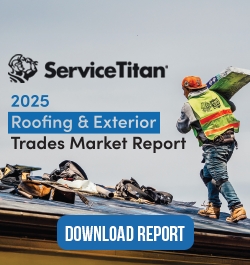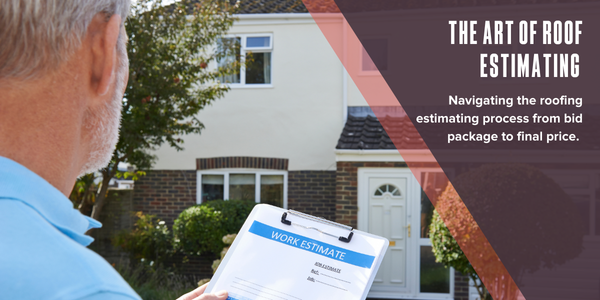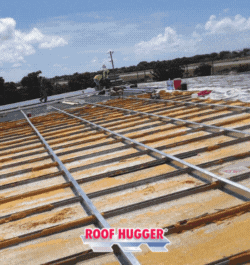The art of roof estimating
April 18, 2025 at 12:00 a.m.By John Kenney, Cotney Consulting Group.
Navigating the roofing estimating process from bid package to final price.
Accurate construction estimating is an essential skill for roofing contractors, ensuring that every project is completed within budget and on schedule. The estimating process involves a series of systematic steps designed to capture all potential costs involved, from materials and labor to overhead and contingencies. Understanding these key steps is crucial to producing precise, reliable estimates. By thoroughly reviewing bid packages, conducting site visits and calculating labor and material costs, contractors can create estimates that reflect the true scope of work, helping them secure competitive bids and maximize profitability. This process, which blends both technical know-how and strategic planning, is fundamental to a contractor’s success. John Kenney of Cotney Consulting Group, on behalf of the FRSA, shares the need-to know steps for estimating.
The key steps in the estimating process
Construction estimating involves a series of systematic steps designed to capture every potential cost accurately. As a roofing contractor, you likely follow a process similar to the one outlined here. Whether you’re a seasoned estimator or just starting your career, understanding and refining these steps is critical to consistently producing precise estimates.
Review the bid package or bid invite
The bid package serves as the foundation of your estimating process. It typically includes critical documents like owner-contractor agreements, bond forms, general conditions, supplementary conditions and construction specifications. As a roofing contractor, thoroughly reviewing the bid package is crucial. You commit to completing the outlined work, so understanding every aspect is vital. The construction drawings within the bid package are categorized by purpose, such as architectural, structural, mechanical and electrical aspects. Your task is to zero in on the documents pertinent to our trade, carefully evaluating details affecting your work scope. This step sets the stage for the rest of the estimating process.
Investing time to review bid documents thoroughly ensures you don’t overlook essential elements that could impact the project’s cost and timeline. Developing a system for reviewing these documents can streamline this phase, allowing you to focus on the finer points of the project that directly impact your work.
Conduct a site visit
While reviewing the bid documents provides a detailed understanding of the project, a site visit gives you a first-hand look at the project’s environment. Even if not mandatory, a site visit often reveals valuable insights into the conditions that could affect the project’s cost. Site-specific factors such as access restrictions, terrain and local regulations can significantly impact labor, equipment needs and the overall approach to the roofing project.
In some cases, specialty roofing contractors might rely more on documentation the project owner or general contractor provides. However, when feasible, a site visit enhances your understanding of potential challenges and provides a more accurate assessment of the required materials, equipment and labor. This proactive approach can save time and resources, allowing you to tailor your estimate to the site’s specific conditions.
Understanding quantities and creating a material takeoff
A precise material takeoff is the cornerstone of an accurate estimate. Reviewing the construction documents and tallying materials needed for the project provides a comprehensive overview of the quantities involved. Organizing the materials based on their measurement criteria enables you to create a clear and structured list that forms the foundation of your estimate.
Most roofing contractors now use digital takeoff tools that expedite this process, allowing for quick measurements and material counts. However, caution is essential; cross verifying the accuracy of digital takeoffs can help prevent costly mistakes. A detailed takeoff not only identifies the materials needed but also includes equipment requirements for the project. Completing this step establishes the groundwork for acquiring accurate pricing information from suppliers and vendors.
Contact vendors and suppliers for pricing
With a detailed material and equipment list, it’s time to engage with suppliers and vendors to gather pricing information. Accurate pricing is crucial to building a reliable estimate. If you do not own the equipment for the project, contacting equipment vendors for leasing or rental prices is necessary. Evaluating the options of owning, purchasing, leasing or renting equipment will influence your overall project cost, as you must consider aspects like depreciation and maintenance. This stage in the estimating process provides the first dollar figures that will shape the project’s cost structure. Establishing good relationships with suppliers and vendors can lead to more favorable terms, discounts or insight into market trends, impacting your project’s profitability.
Identify labor requirements
Determining labor costs is another critical aspect of your estimate. Using the information you’ve gathered thus far, estimate the labor needed to complete the project. Identify the required skilled trades, how many hours will be necessary for each and the crew’s expected production level. Labor efficiency can make or break a project’s budget, so your estimate must reflect realistic labor hours and cost assessments.
Staying updated on local labor market conditions and calculating loaded labor rates – wages plus taxes, benefit and other costs – is vital. Understanding these nuances helps you allocate labor resources effectively and avoid scrutinizing labor costs mid-project.
Gather secondary information: Insurance and bonding requirements
Risk mitigation is fundamental in roofing projects. Understanding insurance and bonding requirements is crucial because they impact your project’s cost directly. General liability insurance is often mandatory but additional policies may be required depending on the project’s size and scope. The general contractor or owner may sometimes carry some of the insurance requirements. However, as a roofing contractor, you may need to factor in builders’ risk, errors and omissions insurance or commercial auto insurance as project costs. By identifying and incorporating these costs into your estimate, you provide a comprehensive view of the financial obligations associated with the project, helping to avoid surprises down the line.
Assess overhead and indirect costs
Estimators must also factor overhead along with indirect costs. Overhead expenses include general and administrative costs, such as office rent, utilities and administrative payroll. Indirect costs might involve renting a project trailer or subscribing to software tools needed for project management. Accurately calculating these costs and spreading them across your project estimates ensures you cover your business’s operational expenses, regardless of whether you have active projects. By considering these overhead costs in advance, you protect your profitability and ensure the long-term sustainability of your roofing business.
Calculate profit and contingency
Finally, it’s time to calculate the profit margin and contingency for the project. Contingency allows you to account for unexpected expenses and project risks, often ranging from two to ten percent of the direct cost price. Including a contingency in your estimate is not about padding the numbers, it’s about protecting your business from unforeseen circumstances that can impact project costs.
After determining the contingency, establish the sales price, which encompasses all project costs – materials, labor, equipment, overhead and contingency. This final figure should provide comprehensive coverage of expenses and generate a satisfactory profit. Once you arrive at this sales price, you can confidently submit your bid or initiate contract negotiations with the project owner or general contractor.
Consistency is key
As you refine your estimating process, consistency becomes paramount. Every project will present unique challenges and variables but maintaining a systematic approach to estimating will reduce the likelihood of overlooking critical costs. A consistent process enables you to create thorough, accurate and precise estimates, giving you the confidence to submit competitive bids and win profitable projects.
Estimating is both an art and a science. By adhering to these steps and focusing on precision, roofing contractors can position themselves for success, ensuring projects are completed within budget and with the desired profit margins.
Original article source: FRSA
Learn more about Florida Roofing and Sheet Metal Contractors Association (FRSA) in their Coffee Shop Directory or visit www.floridaroof.com.























Comments
Leave a Reply
Have an account? Login to leave a comment!
Sign In